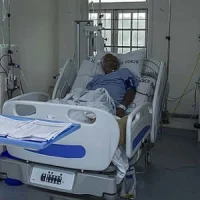There is a paradigm shift happening for sepsis. "Sepsis is no longer solely conceptualised as problem of individual patients treated in emergency departments and intensive care units but also as one that is addressed as public health issue with population- and systems-based solutions," says a commentary in the journal Critical Care.
Such a shift, the article points out, has happened before with myocardial infarction and stroke. These were once viewed solely as acute, unpreventable conditions, but today their prevention through the management of underlying chronic conditions is seen as one of the great public health achievements of the 20th century.
The article highlights the importance of conceptualising sepsis using the familiar model of primary, secondary, and tertiary prevention. In this context, primary prevention refers to the prevention of infection or the sepsis event (i.e., onset of life-threatening organ dysfunction). Secondary prevention refers to the early recognition and treatment of sepsis. Tertiary prevention refers to in-hospital and post-hospital treatment to mitigate the long-term consequences of sepsis.
"While we know much about secondary prevention, work remains to be done in the realms of primary and tertiary prevention," according to the commentary.
In terms of primary prevention, while sepsis may be new in the field of public health, the prevention of infection has been a guiding principle for over 100 years. Today, systems continue to prevent sepsis using myriad strategies applied to different, constantly evolving scenarios. These strategies – including nationwide vaccine campaigns and outbreak management; hospital-wide policies on invasive medical devices, hand hygiene, sterile techniques, and quarantine; and individualised infection prophylaxis among those with immune compromise – have been successful in reducing, and even eliminating, some of the burden of infectious diseases.
The article says a "second realm" of primary prevention includes identifying the characteristics of high sepsis-risk individuals, similar to how the Framingham Study provided understanding of the risk factors for cardiovascular diseases. Early work with administrative healthcare data and contemporary cohorts such as the Reasons for Geographic and Racial Differences in Stroke cohort have provided major advancements to this knowledge gap for sepsis. "These and future works will be critical to help identify both modifiable risk factors and the risk groups in which to target future primary and secondary prevention strategies," according to the commentary.
As for secondary prevention of sepsis, currently the focus is on the effective implementation of systems-based processes to reduce sepsis mortality such as those promulgated by the Surviving Sepsis Campaign. Future directions include measures that continue to move sepsis care earlier, with public awareness campaigns highlighting early recognition, call-ahead triage or early treatment by emergency medical services providers, and hospital-wide sepsis rapid response teams, the article says.
Until further evidence, the current strategies of tertiary prevention remain those universal to high-quality critical care: lung-protective ventilation, early awakening and mobility, early nutrition, reduction of device-associated complications, skin care, and early rehabilitation, among others. Future directions include examining interventions in the post-hospital care of sepsis survivors, which occurs across a variety of settings. These include long-term acute care, short-term rehabilitation, and nursing home facilities but may also involve acute care follow-up clinics, according to the article.
While great public health benefits will result from the inclusion of sepsis into global health priorities of infection control, the commentary cites major challenges to this paradigm shift:
- Sepsis is not a clearly defined disease entity, which makes diagnosis difficult and uniform strategies for quarantine do not apply. This creates conceptual and practical challenges in targeting public health strategies.
- The widespread adoption of early, empiric antibiotic treatment may have consequences that are antithetical to emerging principles in infection control. Specifically, these include the inappropriate use of antibiotics leading to depletion of a limited resource, an increase in adverse drug toxicities, and continued emergence of antimicrobial resistance.
"The complexities of sepsis preclude any one-size-fits-all public health policy," the commentary notes. "A sepsis public health agenda that incorporates components of prevention, containment, early recognition, and treatment and balances policies within the context of downstream effects on public health is one that can achieve greater strides and, ultimately, the prevention of sepsis."
Source: Critical Care
Image Credit: Unsplash.com
References:
Kempker JA, Wang HE, Martin GS (2018) Sepsis is a preventable public health problem. Crit Care 22:116. https://doi.org/10.1186/s13054-018-2048-3
Latest Articles
Sepsis, intensive care units, emergency departments, sepsis prevention
There is a paradigm shift happening for sepsis. "Sepsis is no longer solely conceptualised as problem of individual patients treated in emergency departments and intensive care units but also as one that is addressed as public health issue with population










